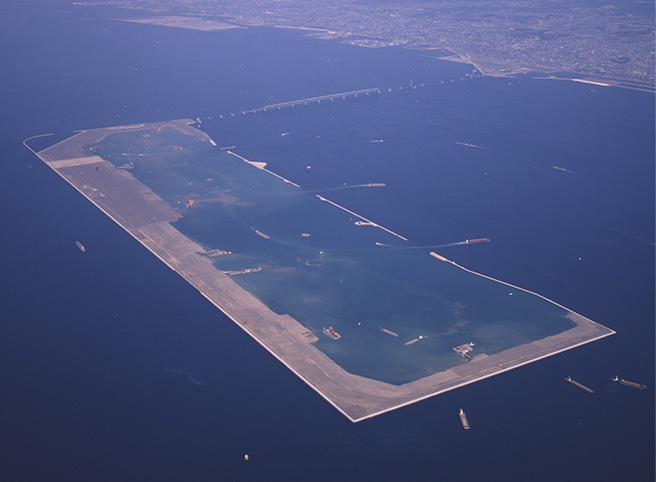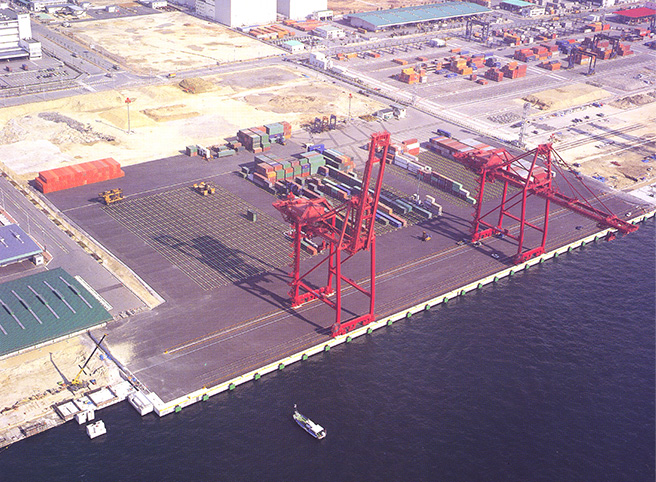- TOYO HISTORY
- LANGUAGE


The “bubble economy” and its collapse
The advent of Japan’s “bubble economy” (1985-1993)
Following the Plaza Accord announced by the G5 countries (Japan, United States, United Kingdom, France, West Germany) in September 1985, Japan implemented a reduction of the official bank rate, expansion of public works investment, and other measures to increase domestic demand. At the same time, individuals and companies actively invested in land and stocks, which was called “zai-tech” (financial technology) at the time. As a result, land prices rose rapidly, and on the final day of trading in 1989 (also the first year of the new Heisei Imperial Era), the Nikkei Stock Average stood at ¥38,957.44. This marked the advent of the so-called “bubble economy.”
Nominal investment in construction was ¥50 trillion in 1985, but trended on a high level thereafter, rising to ¥61.7 trillion in 1987, ¥81.4 trillion in 1990, and ¥84 trillion in 1992, and after surviving the “winter of the construction industry,” all construction companies expanded their lines of business.
In its building construction business, Toyo Construction reached ¥100 billion in orders received for the first time FY 1989, and the total value of orders received topped ¥300 billion only two years later, in FY 1991.
During this period, many companies also engaged in a kind of speculative building called “order creation” (in contrast to “order receiving”), in which the construction company itself acquired land and constructed buildings for sale. Toyo Construction also became involved in this practice, for example, in golf course development and creation of residential land. However, like many others, the Company soon suffered heavy losses due to canceled plans, failure of developers, and a subsequent collapse of land prices.

Phase I construction of Kansai International Airport (Osaka Pref.)

Kawasaki Artificial Island, Trans-Tokyo Bay Highway (Kanagawa Pref.)

Shirashima National Oil Storage Base (Fukuoka Pref.)

Loisir Hotel Naha (Okinawa Pref.)

Memorial stone commemorating the completion of sales of the Naruo Project.
On the other hand, this was a golden age of national projects. More than 20 years after the Kansai International Airport was conceived, construction started in 1986, and Toyo Construction was later involved in the project as a main member. Toyo also participated in a number of other big projects that will be handed down to posterity, such as the Tokyo Bay Aqualine (Trans-Tokyo Bay Highway), the Shirashima National Oil Storage Base, and others.
The “bubble economy” is generally considered to have ended in February 1991. However, investment in public works continued to support the construction industry after the collapse of the economic bubble, and superficially smooth management continued until around 1993, in spite of the ticking time-bomb of nonperforming assets accompanying the fall in land prices.
The main events
| December 1986 | Received order for construction of seawalls at Kansai International Airport Island. |
|---|---|
| April 1987 | Unveiling ceremony for memorial stone commemorating the completion of sales of the Naruo Project. |
| March 1988 | Received order for construction of Kawasaki Artificial Island of the Trans-Tokyo Bay Highway. |
| June 1988 | Mr. Kazuyoshi Takahashi named President. |
| June 1989 | Issuance of US dollar warrant bonds. |
| July 1989 | Ceremony commemorating the 60th Anniversary of foundation. |
| March 1990 | Establishment of TOMAC Co., Ltd. (spinoff of Toyo’s directly-managed marine construction division). Received order for new construction of Loisir Hotel Naha. |
| January 1992 | Received order for reclamation work for Changi Airport (Singapore). |
| October 1993 | Completion and startup of Miho Research Center Materials Testing Laboratory. |
The Great Hanshin-Awaji Earthquake and effects of the collapse of the bubble economy (1994-1998)
The Great Hanshin-Awaji Earthquake struck on January 17, 1995, causing enormous damage centering on Kobe in Hyogo Prefecture. In response to this major disaster, which struck close to the birthplace of Toyo Construction, the Company immediately decided to provide human and material support. Toyo set up a Recovery Office at Naruohama in Nishinomiya and transported supplies to the disaster area, mainly by ship. It was also the industry’s leader in the early recovery of the port and harbor structures at the Port of Kobe, which suffered catastrophic damage in the earthquake. In the Rokko Island District, a pier structure quaywall was substantially completed in a period of 6 months as an emergency temporary pier based on the recommendation of the Committee for Reconstruction of the Hanshin-Awaji Area, which was a government advisory body. Toyo also grappled with the removal of the collapsed Hanshin Expressway with a 24-hour-a-day system, fulfilling its mission as a construction company.
Orders related to recovery and reconstruction following the earthquake peaked in 1996, after which construction investment began to decrease. By 1998, the level had fallen below that of 1989, and investment declined steadily thereafter.
In these circumstances, reducing interest-bearing debt, disposal of bad debts and nonperforming assets, and rationalization of back-office departments became urgent management issues after the collapse of the economic bubble, and in November 1997, the Company was faced with the bitter decision of encouraging 450 employees to take early retirement.

Emergency recovery work at Rokko Island quaywall (Hyogo Pref.)

Series of -13.0m dredging work exterior construction at Tokachi Port (Hokkaido).

Nakhodka oil spill accident (Fukui Pref.).

Reclamation works in Cebu (Philippines).

IQS Kawasaki The Tower (Kanagawa Pref.).
The main events
| June 1994 | Mr. Akira Onishi named President. |
|---|---|
| January 1995 | Great Hanshin-Awaji Earthquake. |
| April 1995 | Completion of Structural Testing Laboratory at Miho Research Center. |
| January 1997 | Nakhodka oil spill accident; many Toyo employee participated in the cleanup as volunteers. |
| March 1997 | Received order for reclamation works in Cebu (Philippines). |
| November 1997 | Announcement of early retirement incentive plan. |
| June 1998 | Mr. Minoru Yatabe named President. Drum centrifuge loading equipment was introduced at Naruo Research Center. |
| September 1998 | Received order for Kawasaki T・S Mansion (IQS Kawasaki The Tower) (first high-rise condominium constructed by Toyo; located in Kanagawa Pref.). |







